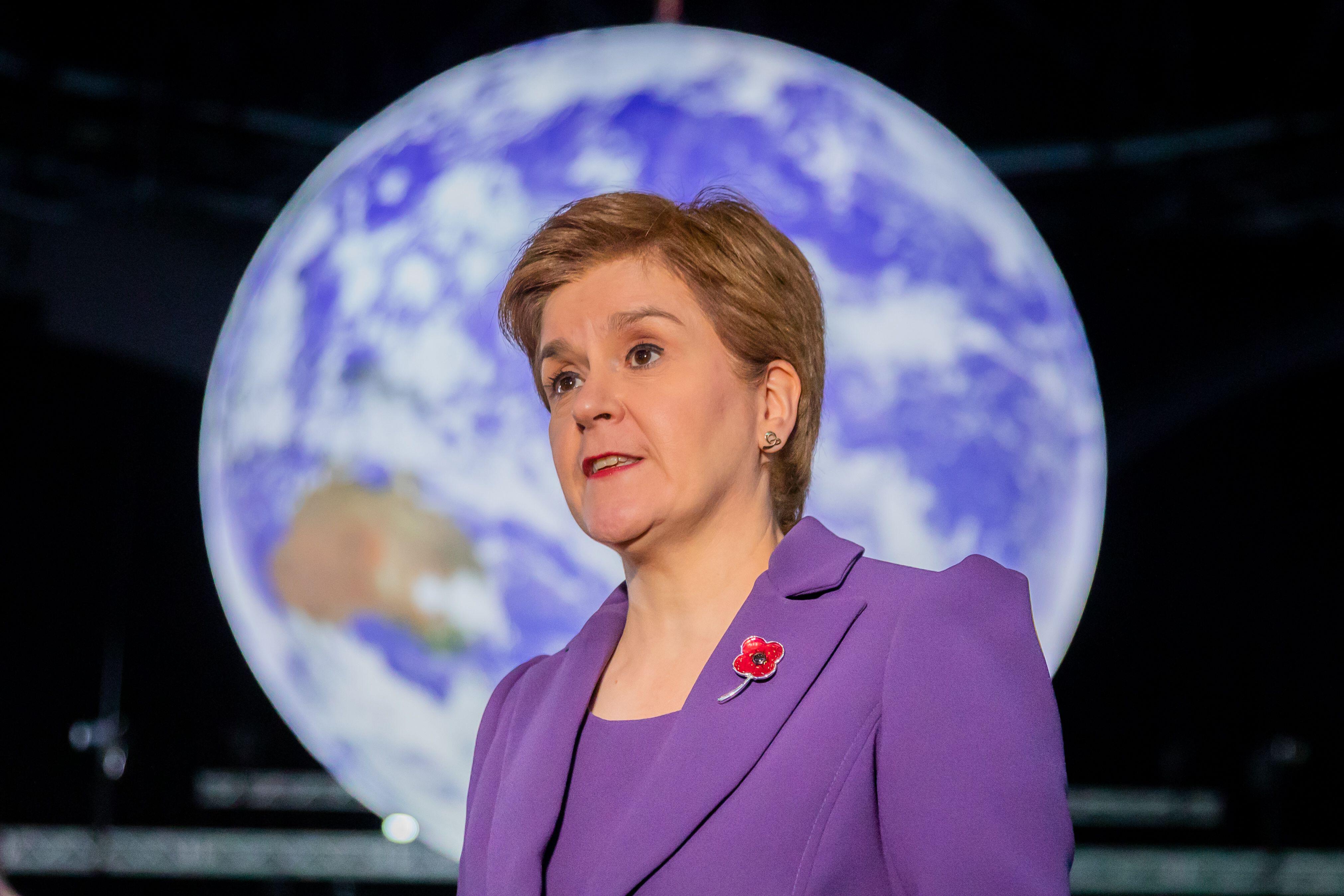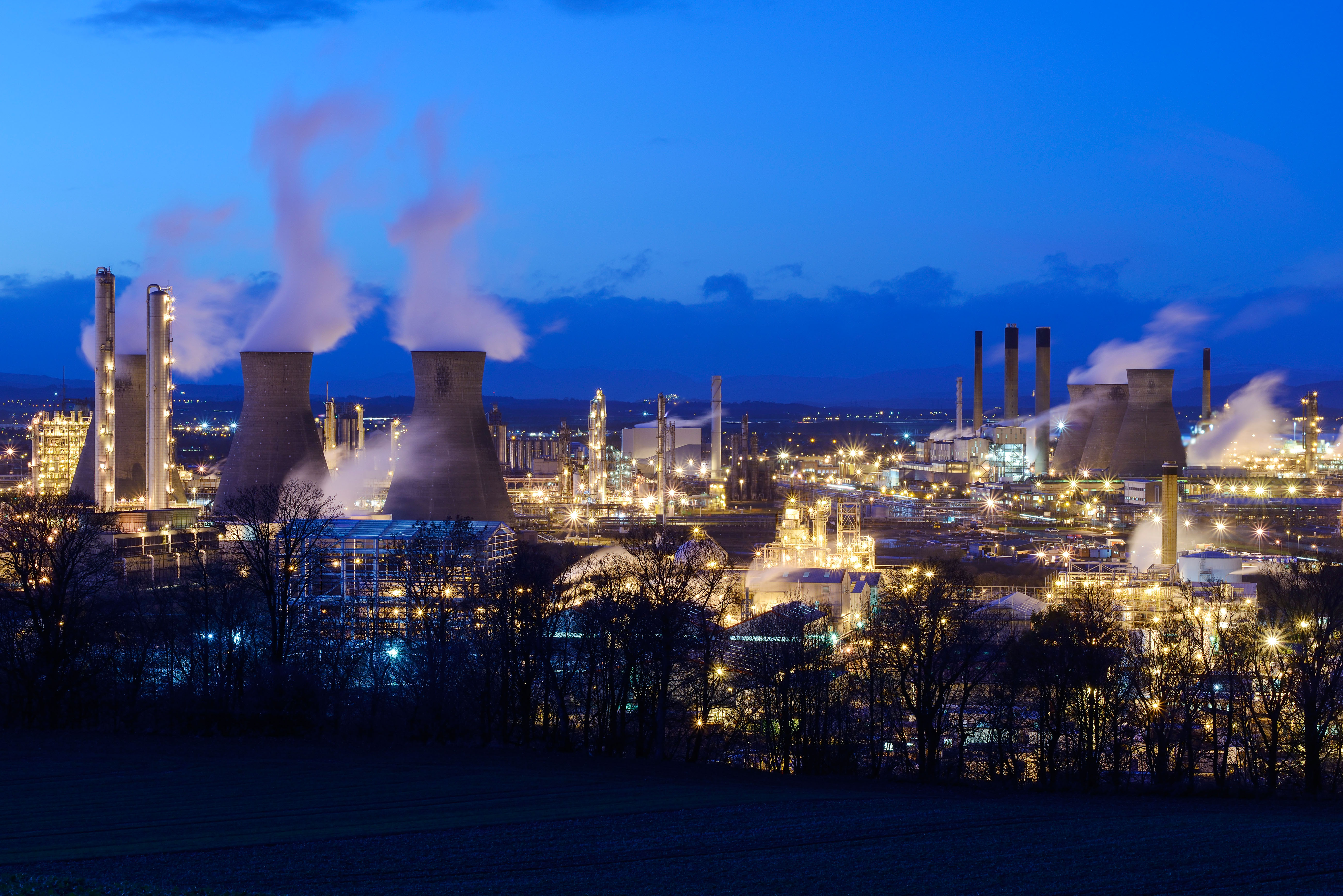Climate emergency: The science is not up for debate but the same can't be said for the political response
At the SNP’s spring conference in 2019, then first minister Nicola Sturgeon declared a “climate emergency”, pledging that Scotland would lead the world in tackling the biggest challenge of our time. For a party which had predicated much of its economic strategy for independence just five years earlier on North Sea oil and gas, it was quite a key change, albeit a necessary one.
That’s because the evidence of climate change is no longer something confined to the footnotes of journals or the presentations of academic symposia; its impact is all around us, appearing to both accrue and accelerate all at once.
The past eight years have been the warmest on record globally, with increased concentrations of greenhouse gases pushing temperatures around 1.1C above pre-industrial levels. The impact of those rising temperatures is clear to see, from devastating wildfires in Europe and North America to deadly floods in Nigeria and Pakistan.
Closer to home, 2022 was the UK’s hottest year ever, with Scotland recording 35.1C in the Borders during a mini summer heatwave, breaking by more than 2C a record which had stood for nearly 20 years. London Fire Brigade reported its busiest day since the Second World War as temperatures topped 40C in the UK for the first time. Analysis by the Met Office found the record-breaking heat was made 160 times more likely due to the climate crisis.
But while the scale of the problem is no longer up for debate, the means of addressing it very much are. When world leaders met in Glasgow in November 2021 for the COP26 climate summit, the mantra from the UK Government was about “keeping 1.5 alive”. That refers to the landmark Paris Agreement of 2015, a legally binding international treaty on climate change which seeks to limit temperatures rises to “well below 2C above pre-industrial levels” and to pursue efforts to limit the increase to 1.5C above pre-industrial levels.
According to the UN’s Intergovernmental Panel on Climate Change (IPCC), crossing the 1.5C threshold risks unleashing far more severe impacts, such as increasingly damaging storms, worsening droughts and a proliferation of weather events such as heatwaves and floods.
Following COP26, the UK Government’s press release proudly boasted that the 1.5C commitment had indeed been “kept alive”. But there was pessimism from environmentalists, many of whom had gone into the summit with low expectations, after pressure from China and India saw the watering down of a key pledge on the use of coal, with the changing of the wording from “phase out” to “phase down”.

If the 1.5C target is still alive, then many scientists believe it to be on life support and perilously close to croaking its last breath. Some, including billionaire Bill Gates, think the target is already dead and that we should be shifting our focus to help understand how we can live in a world that is hotter. Scientists believe the 1.5C figure could be temporarily breached between now and 2027.
Yet for the time being, the climate policy of governments across the world is predicated on the Paris Agreement. The Scottish Government has a target of reaching “net zero” by 2045, meaning the balance of greenhouse gases emitted and extracted from the atmosphere. But despite fine words from the government and the former first minister, progress has been far from straightforward.
The Scottish Government likes to call its emissions targets “ambitious”. On the road to becoming net zero in just over 20 years, there are also interim targets of cutting emissions by 75 per cent by 2030 against 1990 levels and by 90 per cent a decade later. And yet it seems these cuts are currently too ambitious to be achieved. According to the government’s latest figures released in June 2021, Scotland missed its emissions targets for the third year in a row, with a 51.5 per cent reduction against a target of 54 per cent for 2019.
Some of the external assessments of the government’s progress have been damning. Late last year, the Climate Change Committee, a non-departmental public body which advises both the Scottish and UK governments, warned that Scotland’s targets were in “danger of being meaningless”. The committee said progress had “stalled”, with Scotland’s early lead in decarbonising over the rest of the UK lost and concerns about feasibility of the 2030 goal to cut emissions by 75 per cent.
The committee said plans to decarbonise transport were falling behind other parts of the UK, with the government apparently unwilling to consider measures to recover the shortfall, such as restrictions on aviation. On plans to decarbonise buildings, the domain of government minister and Scottish Greens co-leader Patrick Harvie, the committee described existing policies as “wholly inadequate”.
And it said detail was desperately needed on Scotland’s low-carbon agriculture policy following the post-Brexit departure from the EU Common Agricultural Policy.
The committee called for closer collaboration between the Scottish Government and its UK counterpart and between the government and local authorities. And it highlighted slow progress in areas where policy is significantly devolved, such as transport, land use and waste.
Last month, spending watchdog Audit Scotland said governance of climate policy had improved since Sturgeon’s declaration of an emergency in 2019. But it said adapting to the impact of climate change had received less focus than reducing emissions and hitting net zero targets. And it highlighted gaps in reporting which make it difficult to assess the progress that has been made to date.
“The Scottish Government’s set up for responding to the climate crisis has constantly evolved since 2019,” Auditor General Stephen Boyle said. “But the different parts of government could be better co-ordinated.”
If there are problems for the government when it comes to coordinating environmental policy, there are also challenges in putting some of that policy into action. Perhaps the most high-profile example of that difficulty has been around the introduction of the Deposit Return Scheme.
One of Humza Yousaf’s first actions as first minister was to the delay the introduction of the scheme amid considerable disquiet from those required to take part in it. It is now the job of circular economy minister Lorna Slater to make the scheme work amid concerns from industry.
According to its critics, the DRS, which aims to increase the number of drinks containers being recycled by asking customers to pay a 20p deposit, is badly designed and will put extra burden on businesses feeling the pinch due to increased energy costs and inflation.
While clearly flawed in its current form, the difficulties with DRS are illustrative of the challenges that lie ahead when environmental policy rubs up against economic and business interests. It’s a difficulty which has been particularly apparent with the recent debate on Highly Protected Marine Areas (HPMAs). Part of the Bute House Agreement between the SNP and the Scottish Greens, HPMAs seek to protect biodiversity by banning fishing, aquaculture, and other forms of commercial activity along parts of the coastline.
Despite the solid environmental reasons for their introduction, HPMAs have alienated coastal communities where jobs are reliant on the fishing industry. Amid comparisons to the Clearances, the SNP faced a mini parliamentary rebellion over the plans earlier this month when MSPs Fergus Ewing, Kate Forbes and Alasdair Allan voted against an amendment from net zero secretary Màiri McAllan. When the matter was raised at Prime Minister’s Questions, Rishi Sunak called on the Scottish Government to re-think its “potentially damaging” plans.
That’s despite the UK Government looking to do exactly the same thing in England, where the first three HPMAs are expected to be designated by early July, albeit initially on a pilot basis.
But it’s on the future of the North Sea that the government faces the biggest political challenge to its climate agenda. While “Scotland’s oil” was once central to the SNP’s message on independence, the party now finds itself accused of selling the industry out in the pursuit of the national emissions targets.
In the run-up to COP26, Sturgeon tied herself in knots when commenting on the future of the Cambo oilfield, which lies around 80 miles north west of Shetland. The former first minister eventually said the oilfield “should not get the green light”, contradicting the stated position of the UK Government. Ultimately the decision is one for the Oil and Gas Authority, but the situation has been complicated by Russia’s invasion of Ukraine and concerns over energy security.
Sturgeon’s position aligns with climate scientists and even UN Secretary-General António Guterres who has accused oil companies of perpetuating a business model which is “inconsistent with human survival”. Indeed in a speech at Davos earlier this year, Guterres accused “big oil” of “peddling a lie” and riding roughshod over its own science.
But the current Scottish Government orthodoxy on the climate and the future of the oil and gas sector has put it at odds with members of the SNP, who have warned against running down the industry in the North Sea. During the recent leadership contest, Ash Regan said she would not support an “accelerated net zero path” that would “throw tens of thousands of oil workers out of jobs” and “hollow out” communities in the north east and in the Highlands and Islands.

Meanwhile at a recent First Minister’s Questions, Fergus Ewing, now a constant thorn in the government’s side, said sacrificing oil and gas resources would be “economic masochism”, something he said was being advocated by the “wine bar revolutionaries” in the Scottish Greens.
“There are concerning noises coming out of the Scottish Government about not being clear on the transition away from oil and gas,” says Justin Kenrick, a spokesperson for Extinction Rebellion Scotland.
“You can’t just do business as usual and tweak it. We need to be shifting off oil and gas as quickly as possible rather than perpetuating the oil and gas industry’s control over the so-called just transition.”
That’s a view shared by Friends of the Earth Scotland which, in assessing Sturgeon’s legacy on climate policy, says her government “failed to grasp the scale of transformation needed”. It wants Yousaf to set a “clear end date” for oil and gas, helping to provide certainty for workers in the sector while phasing out fossil fuels.
Activists will gather for Climate Camp Scotland in July and have been focusing their attentions of late on Ineos, owner of the Grangemouth oil refinery near Falkirk. Among those taking part will be This Is Rigged, the group which has staged a number of protests during First Minister’s Questions in the Scottish Parliament in recent weeks.
Their cause is likely to be strengthened by another summer of extreme weather events. Climate scientists have warned that the return of El Niño, a weather system in the Pacific which leads to higher global temperatures, could see the world record its highest-ever temperatures. The current hottest year on record, 2016, coincided with El Niño.
For those frustrated at the pace of action, time is running out. “The government declared an emergency and then created targets in place of taking action,” says Kenrick. “The process they created hasn’t challenged the status quo and the status quo is what’s driving the crisis.”
Holyrood Newsletters
Holyrood provides comprehensive coverage of Scottish politics, offering award-winning reporting and analysis: Subscribe